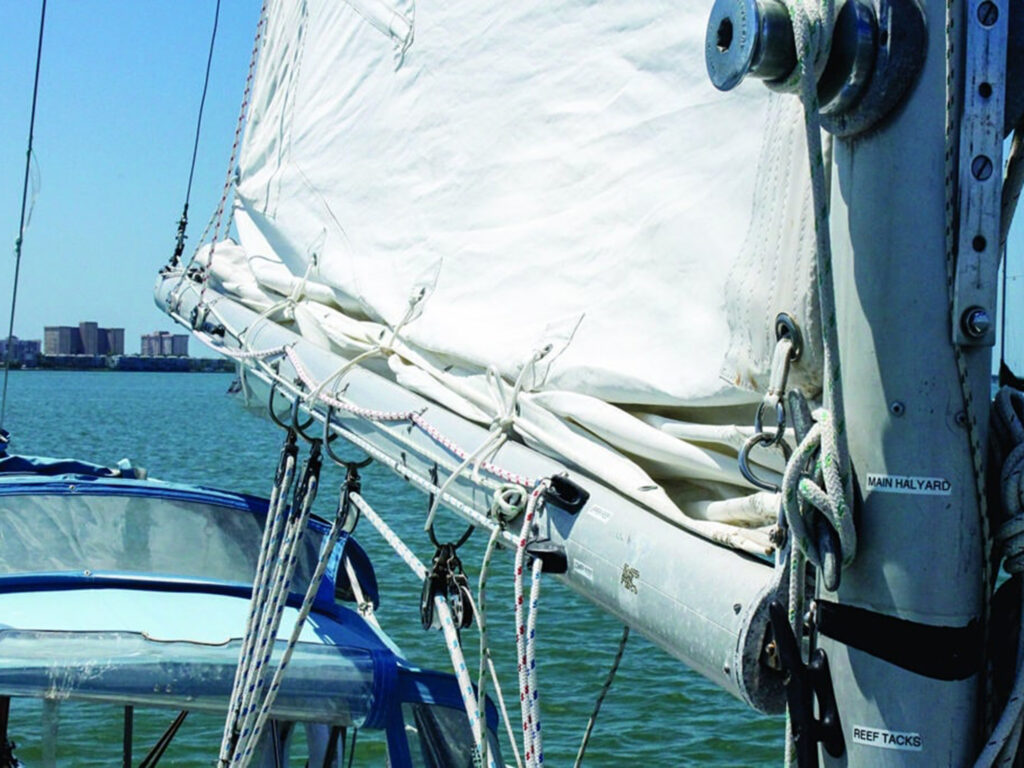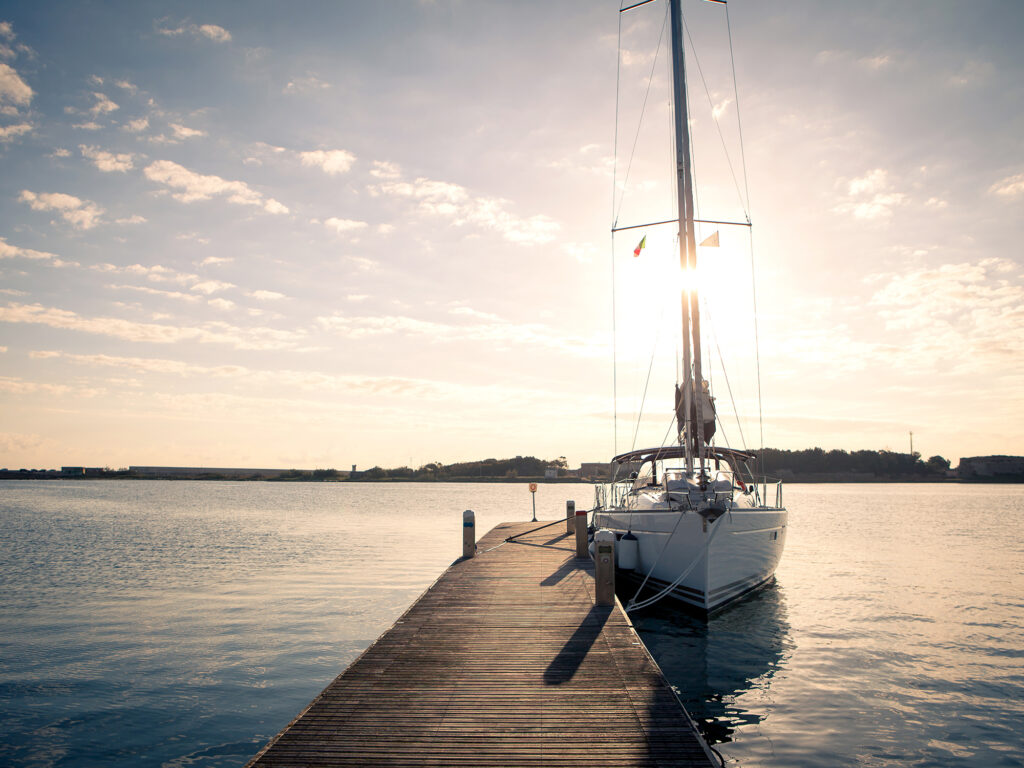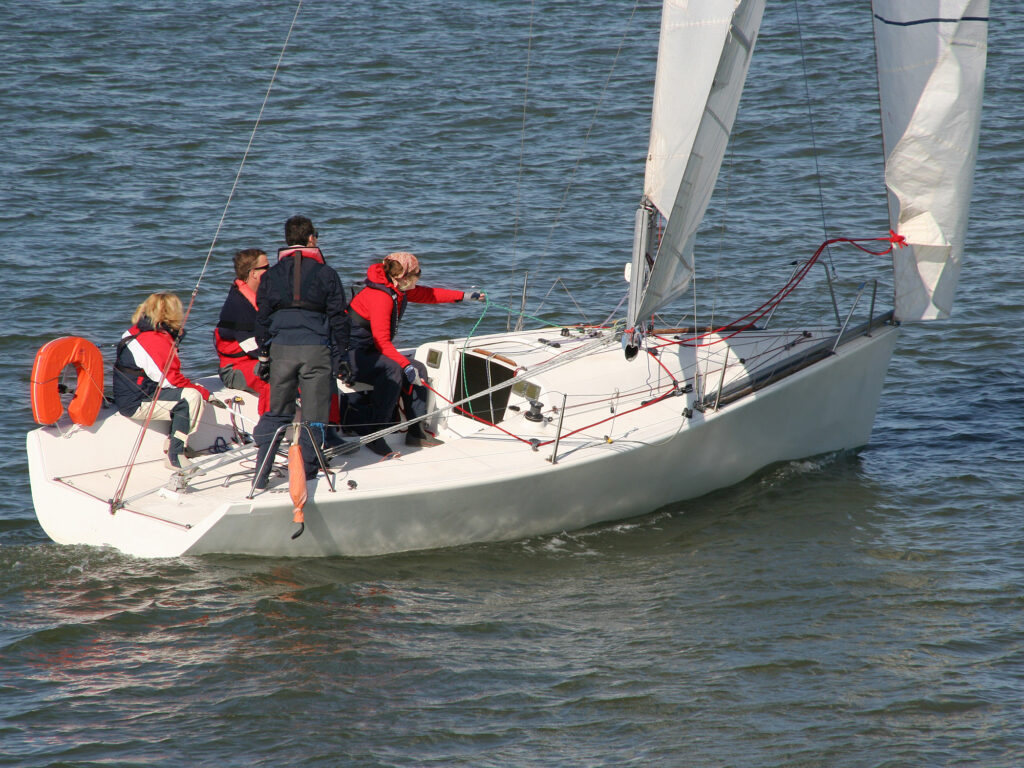SB Television
10 Seamanship Skills Every Sailor Should Master
 Keeping an eye to windward, a sailor should note subtle cloud build-up before a frontal boundary arrives—a small move that makes a big difference.
mbroms/stock.adobe.com
Keeping an eye to windward, a sailor should note subtle cloud build-up before a frontal boundary arrives—a small move that makes a big difference.
mbroms/stock.adobe.com
Seamanship is not a checklist—it’s a mindset. It’s built from experience, intuition, and hard-earned judgment, developed over thousands of hours afloat. For cruisers, seamanship is what bridges the gap between adventure and adversity, comfort and chaos. It’s not just about staying safe. It’s about knowing how to respond when safety is in question.
These ten foundational skills reflect the core of good seamanship. They’re drawn not only from best practices, but from lessons learned from real sailors when things went sideways—and from the calm confidence of cruisers who’ve seen it all and still treat the sea with humility.
1. Anticipating the Weather, Not Just Checking ItMost modern cruisers have access to excellent weather models. But seamanship means going deeper than screen time. It means developing the habit of reading the sky, feeling the wind’s subtle shifts, and knowing the patterns in your region—and your season.
Learn It Afloat:
- Keep a written weather log. Record sky conditions, pressure, wind direction, and sea state every 6 hours. You’ll start seeing patterns before they show up on the GRIB files.
- Know your local signals: in the Caribbean, a low ridge might bring squalls. On the U.S. East Coast, a summer southerly could build into something more serious by nightfall.
Why It Matters: A sailor who reefed early, sensing a squall line forming behind an island ridge, stayed upright while others were knocked flat. Seamanship isn’t passive—it anticipates.
2. Reefing Before You Need To With the first reef tucked in, the mainsail is balanced and the boat remains in control—proof that smart seamanship happens before the squall hits.
Courtesy Bruce Bingham
With the first reef tucked in, the mainsail is balanced and the boat remains in control—proof that smart seamanship happens before the squall hits.
Courtesy Bruce Bingham
Too many sailors wait until the boat is heeling hard or the autopilot groans before reefing. Good seamanship means staying ahead of the conditions. Not only does it protect your rig and sails, it reduces fatigue—for boat and crew.
Best Practices:
- Establish “reef points” based on wind speed and sea state. For instance, reef at 15 knots true if you’re windward in lumpy seas, even if you could carry more canvas off the wind.
- Practice reefing on all points of sail. Can you tuck in a reef while close-hauled? How about on a dead run?
- Teach your crew where the chafe points are, and how to spot an over-sheeted leech or a flogging luff.
Wisdom in Action: One cruiser’s backstay gave way because they waited too long to reef. Now, their mantra is “first reef for the boat, second for the crew, third for the sails.” Seamanship is proactive.
 It’s important to know every inch of your boat—above and below decks—so when something goes wrong, you’re already halfway to the fix.
Courtesy Michael Savage
It’s important to know every inch of your boat—above and below decks—so when something goes wrong, you’re already halfway to the fix.
Courtesy Michael Savage
Most problems on cruising boats aren’t caused by a failure to sail—they’re caused by a failure to know. Know your electrical system. Your engine’s behavior. The subtle sound a worn impeller makes. The color of your transmission fluid when it’s good, and when it’s burned.
Practice Tips:
- Every month, inspect your rig aloft—even at anchor. Use binoculars for lazy inspection, but get aloft quarterly.
- Follow every wire. Know what your house loads are, and how long you can run off-grid before recharging.
- Practice switching fuel tanks, bleeding air, or starting with a dead battery bank.
In Practice: A cruiser motoring upwind in a rough pass had their engine stall due to a clogged raw water intake. Because they’d previously disassembled the strainer dockside, they knew exactly how to clear it—fast. Seamanship begins before you cast off.
4. Docking Like You’ve Done It a Thousand Times (Even If You Haven’t) There’s no substitute for calm hands and practiced moves around the marina. Seamanship shows at the dock.
shishkin137/stock.adobe.com
There’s no substitute for calm hands and practiced moves around the marina. Seamanship shows at the dock.
shishkin137/stock.adobe.com
Nothing reveals your command of the boat more publicly—or more unforgivingly—than docking. Good seamanship shows when wind and current complicate a tight slip, and you still land the boat gently, fenders barely kissed.
Keys to Mastery:
- Know how your prop walk behaves in both forward and reverse.
- Always have a bail-out plan if you lose steerage or encounter crosswind.
- Use spring lines like magic wands—they can pivot your boat or stop it cold.
Real Lesson: One skipper taught his teenage daughter to dock the boat under sail, practicing in light airs with no engine. Later, when the starter failed, she brought the boat in under jib alone—calmly. Seamanship is graceful under pressure.
5. Anchoring to Sleep, Not Worry A well-set anchor means restful nights and worry-free weather watching.
Blackbookphoto/stock.adobe.com
A well-set anchor means restful nights and worry-free weather watching.
Blackbookphoto/stock.adobe.com
Good seamanship at anchor means more than just dropping the hook. It’s about choosing the right spot, setting properly, and watching for changes—not just in weather, but in tide, swing radius, and nearby boats’ gear.
Refine Your Routine:
- Dive your anchor whenever practical to confirm the set. Sand can disguise poor penetration.
- Always “power set” by reversing at idle, then increasing throttle gradually to ensure holding.
- Keep a second anchor rigged and ready in challenging anchorages or marginal bottoms.
Why It Matters: In one story, a dragging catamaran at 2 a.m. narrowly missed another boat because its owner didn’t check their rode-to-depth ratio or swing clearance. Seamanship is about taking the extra 15 minutes—before cocktails.
6. Navigation That Doesn’t Need Batteries Good seamanship means knowing where you are, even when the screen goes dark.
Courtesy Cap’n Fatty Goodlander
Good seamanship means knowing where you are, even when the screen goes dark.
Courtesy Cap’n Fatty Goodlander
Plotters fail. iPads overheat. Touchscreens crack. Seamanship includes knowing your position without a single pixel involved.
How to Stay Sharp:
- Log position hourly on paper. Use bearings and ranges to confirm location.
- Practice dead reckoning on day sails. Use time/speed/distance to estimate arrivals.
- Learn to eyeball distances on water by mast height or hull length—vital for judging separation in tight quarters.
A Timely Reminder: One cruiser ran onto a reef because they were following a plotted track that was offset due to chart error. A simple visual bearing and depth sounder check would’ve saved their keel. Seamanship never assumes the chart is always right.
7. Line Handling That Prevents Injury—and Embarrassment Smart line handling starts with winch awareness—never wrap blindly, always tail under control, and treat every loaded line like it could bite.
Cloudy Design/stock.adobe.com
Smart line handling starts with winch awareness—never wrap blindly, always tail under control, and treat every loaded line like it could bite.
Cloudy Design/stock.adobe.com
Lines under tension can maim. A poorly tossed dock line can damage a good first impression. A missed cleat can cause a costly collision. Seamanship means fluency with your hands and a respect for loaded lines.
Best Habits:
- Always know the load before you release a line. Never uncleat blindly.
- Rehearse line handling with novice crew—slowly, on calm days.
- Replace old or crusty lines that can jam in clutches or chafe under load.
From Experience: A sailor broke a finger when a jammed headsail sheet whipped loose under pressure. They now run drills on load awareness and stress communication. Seamanship is safety through muscle memory.
8. Helm Sense and Balance When the sails are balanced and the helm feels light, the boat speaks through motion. Seamanship is learning to listen.
Tyler Olsen/stock.adobe.com
When the sails are balanced and the helm feels light, the boat speaks through motion. Seamanship is learning to listen.
Tyler Olsen/stock.adobe.com
A well-trimmed boat is quiet, responsive, and low on strain. Seamanship means learning how the boat feels when she’s right—and when she’s telling you something is off.
What to Tune Into:
- A hard helm or excessive weather helm? Reef or flatten sails. Adjust your traveler.
- Rudder feedback soft? You may be stalling the foil—adjust course.
- Learn to “feather” the boat in gusts with subtle tiller movements, not brute force.
At Sea: One offshore skipper swears he can feel when his boat is 1° off trim just by hand pressure on the wheel. Seamanship is sensitivity, not brute strength.
9. Emergency Preparedness That Feels Routine Man overboard practice runs build muscle memory that can save lives when seconds count.
proxima13/stock.adobe.com
Man overboard practice runs build muscle memory that can save lives when seconds count.
proxima13/stock.adobe.com
When things go wrong, panic is your worst enemy. The only cure is muscle memory, built through real drills and redundancy planning.
Build Your Readiness:
- Do monthly MOB (man overboard) drills. Use a fender and bucket to simulate drag.
- Label and test all seacocks. Can you isolate a bilge pump manually?
- Practice mayday procedures. Know how to send a DSC distress call without thinking.
A Near Miss: A crewmember who recently wrote to us fell overboard during a nighttime headsail change. Thanks to their previous rehearsals, recovery took under 4 minutes. Seamanship is what keeps fear from turning into failure.
10. Learning, Always The best sailors stay curious. Seamanship grows with every mile, every mistake, and every question you’re willing to ask.
Jan Kranendonk/stock.adobe.com
The best sailors stay curious. Seamanship grows with every mile, every mistake, and every question you’re willing to ask.
Jan Kranendonk/stock.adobe.com
The most accomplished sailors will tell you the same thing: they’re still learning. Seamanship isn’t a badge—it’s a commitment. To observe more. To ask questions. To pass on what you’ve earned the hard way.
Cultivate This Practice:
- Debrief after every passage—what went right, what didn’t, what you’ll do differently.
- Invite criticism from your crew. It’s how you get better.
- Read widely. Ask elders. Join the conversation.
Hard Truth: Every sailor has a story of getting it wrong. The best sailors tell those stories willingly, to help someone else get it right next time. Seamanship is humility in motion.
Final ThoughtThere is no single certification for seamanship—no logbook entry that declares you a master. But these ten skills, practiced deeply and lived consistently, will carry you safely across oceans or around the bay. They’re not flashy. But they’re everything. Because real seamanship doesn’t show up when the sun is shining and everything is working. It shows up when the wind builds, systems fail, and the only thing holding it all together is you.
The post 10 Seamanship Skills Every Sailor Should Master appeared first on Cruising World.
- Home
- About Us
- Write For Us / Submit Content
- Advertising And Affiliates
- Feeds And Syndication
- Contact Us
- Login
- Privacy
All Rights Reserved. Copyright , Central Coast Communications, Inc.